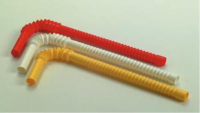
Q: My male client is age 6. He has average intelligence, CP, and cleft palate. He was pre-mature and is non-verbal. He has been using an iPad with communication app “Words for Life” very successfully. He drools, can’t blow, barely moves his mouth, etc. He makes random vocalizations. Any ideas? This child represents some of the most severe we see. This is severe apraxia and dysarthria, with cleft palate thrown in just to make it interesting. Let us state bluntly…

